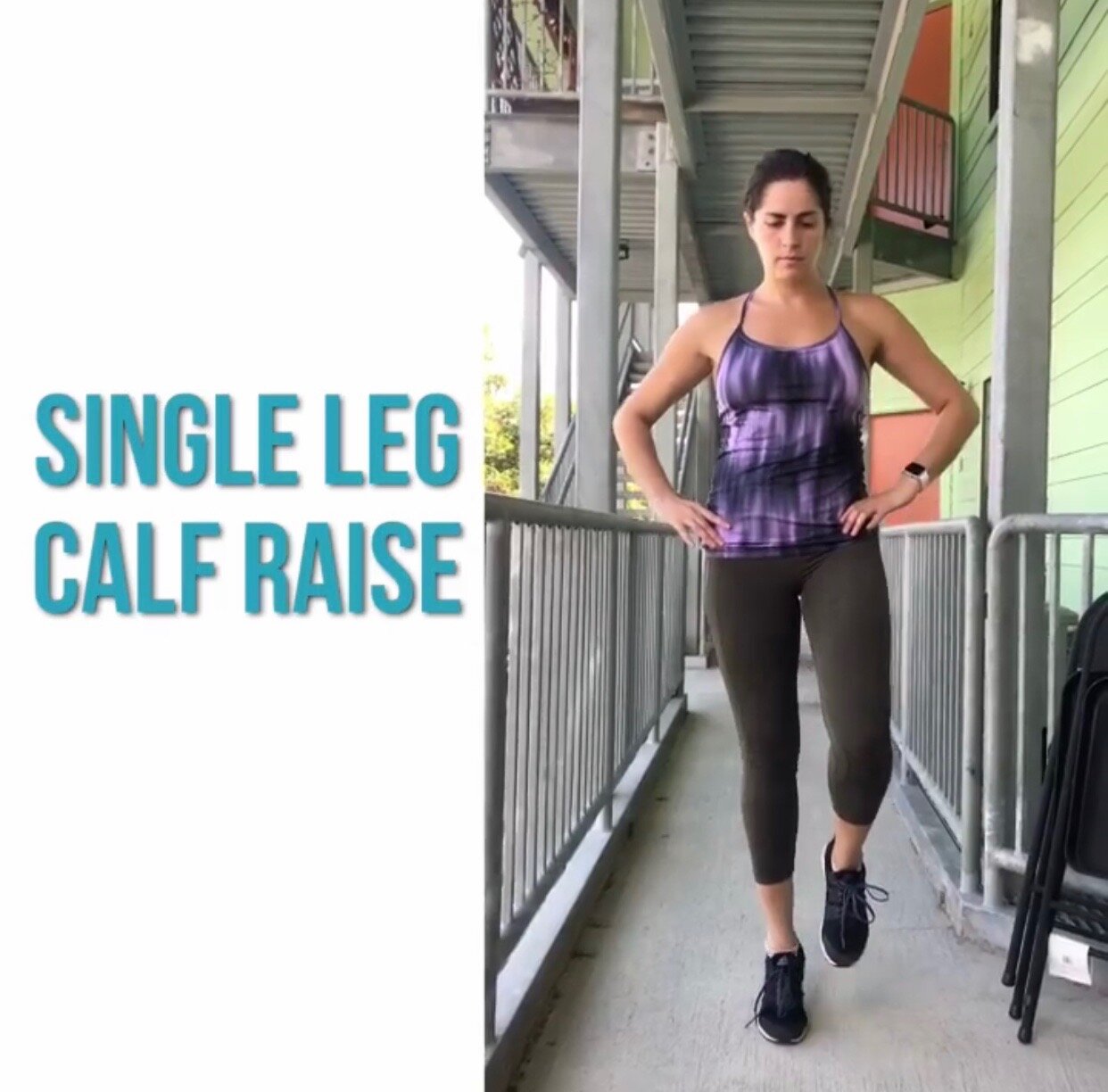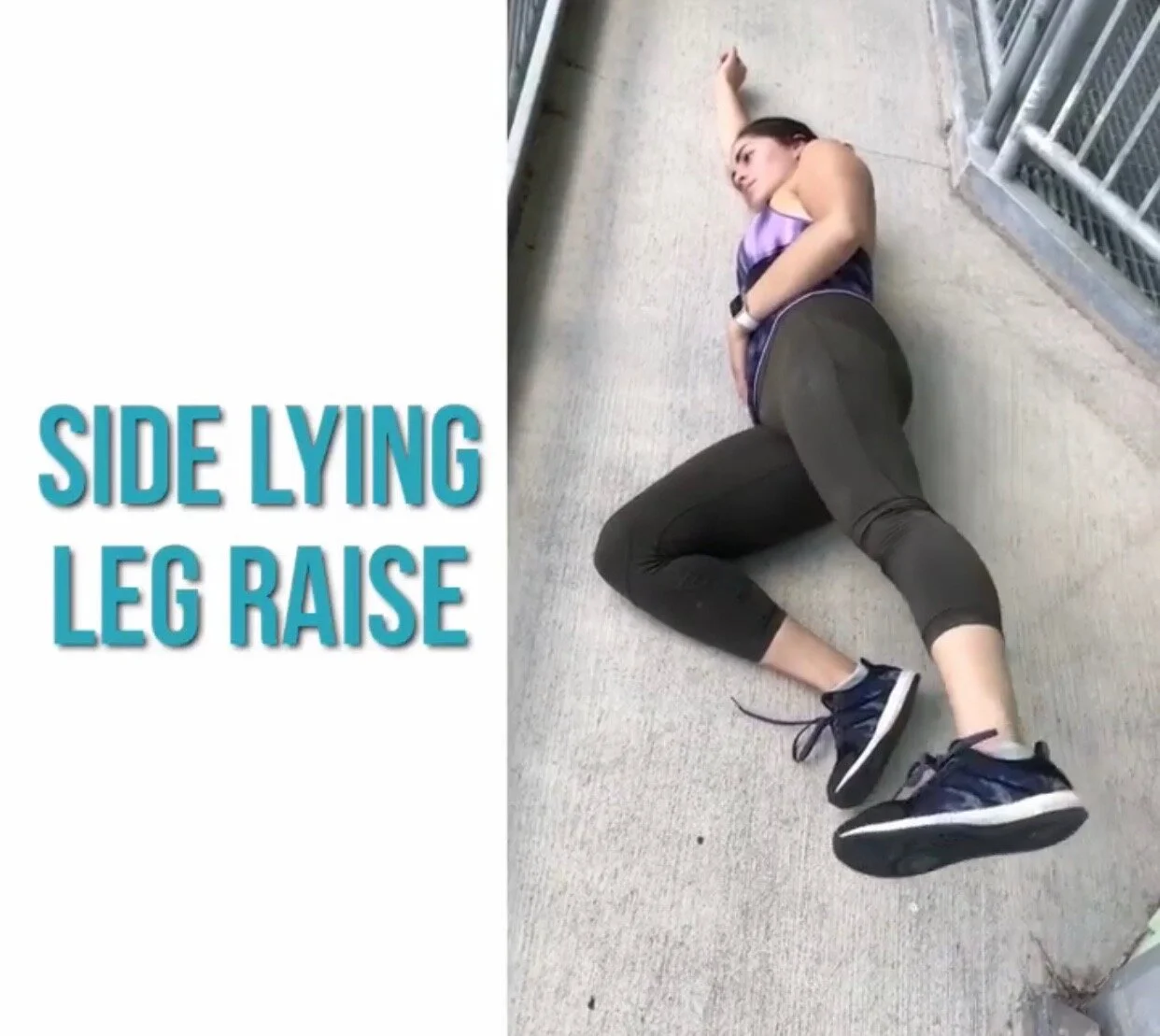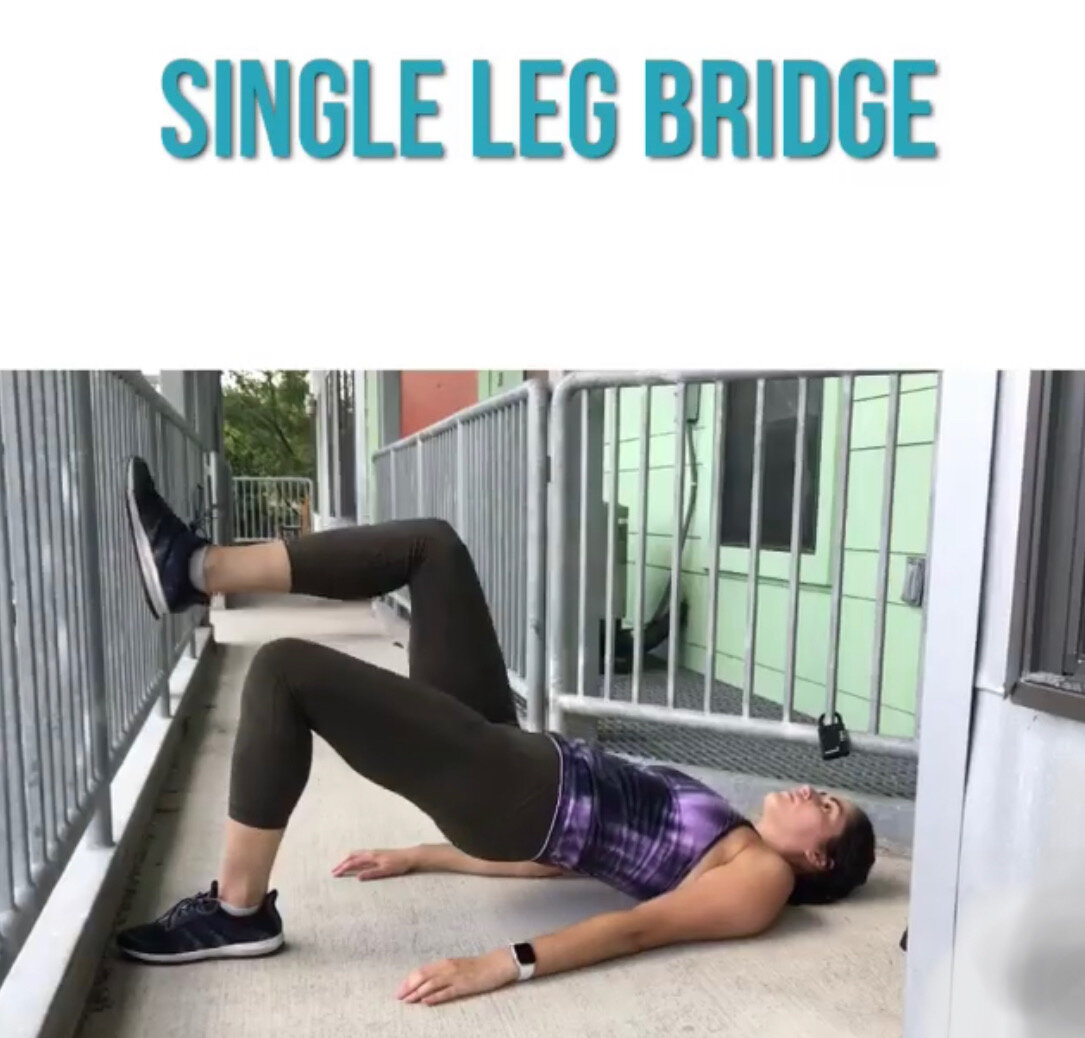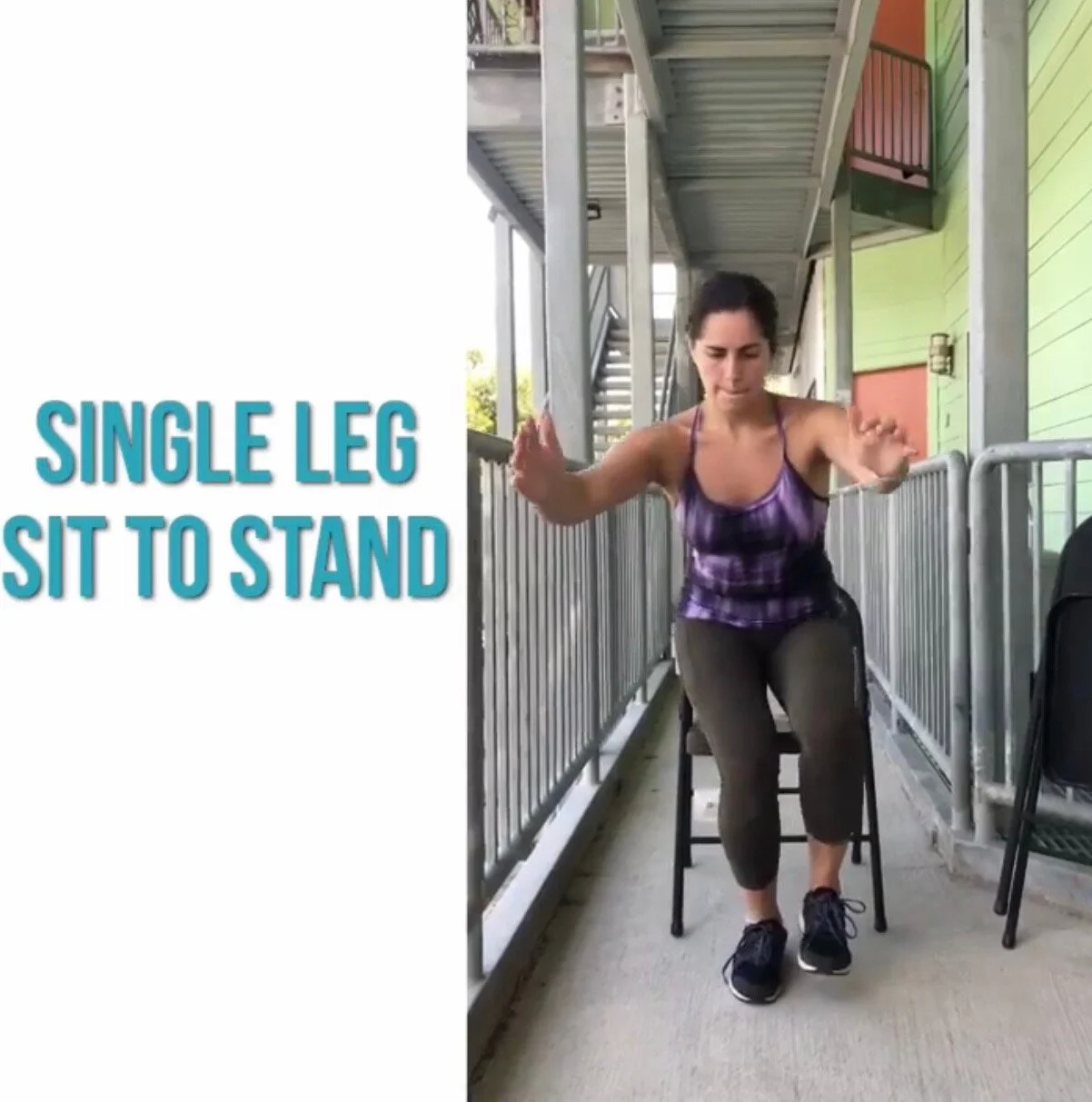Before Running Postpartum, Can You Do This?
About a year ago, three physical therapists developed a return to running guideline for postpartum runners. If you've been following along with me over the past few months, you've likely heard me talk about it before. While research is still lacking in this area, it provided us with a great collection of all the best information we have.
One aspect the protocol was the importance of making sure not only your pelvic floor is strong enough to return to a high impact, dynamic exercise program, but also your key hip muscles like the abductors, adductors, flexors and extensors. Having your strength tested by a physical therapist is important, but this guideline also suggested someone should be able to do at least 20 repetitions (with good form) of each of the following exercises to ensure these muscle groups are prepared for running.
Here are the four exercise, along with a little instruction on how to do them the right way!
Start by standing on one leg. Raise your heel and come up onto your toes, slowly lower yourself back down. Do 20 reps without losing your balance, continuing to lift your heel to the same height each time.
Start by laying on your side with your hips in line with one another. Bring your leg back so you have a straight line from shoulders to your ankle. Do 20 straight leg raises, not letting your top hip pop back or your leg come forward.
Start on your back. Lift one leg and hold it up. Do 20 single leg bridges, bring your hips all the way up so you're a straight line from shoulders to your knee at the top of each bridge.
Start seated on a chair. Lift one leg, and hold it off the ground. Stand up without using your arms, sit back down. Pay attention to your knee and try to keep it from shooting inwards.
Now, being able to do this does not mean that you are ready to go on a run. Additionally, if you can do these but running still doesn't feel right, there are likely other (treatable!) factors at play. These guidelines also suggest being assessed by a pelvic floor PT, strength training both your full body and pelvic floor for a minimum of 6-12 weeks after your 6 week postpartum follow up, beginning with low impact exercises.
Postpartum runners may experience leakage with running, hip and knee pain while building up mileage, heaviness in the pelvis or generally struggle to feel like they are building back to pre-pregnancy fitness levels. It's important to remember that everyone recovers at different rates and listening to your body is always important as you return to any exercise postpartum.
While global guidelines are immensely helpful, don't forget that if you are experiencing pain, leakage or need a little extra guidance, PT can help.




